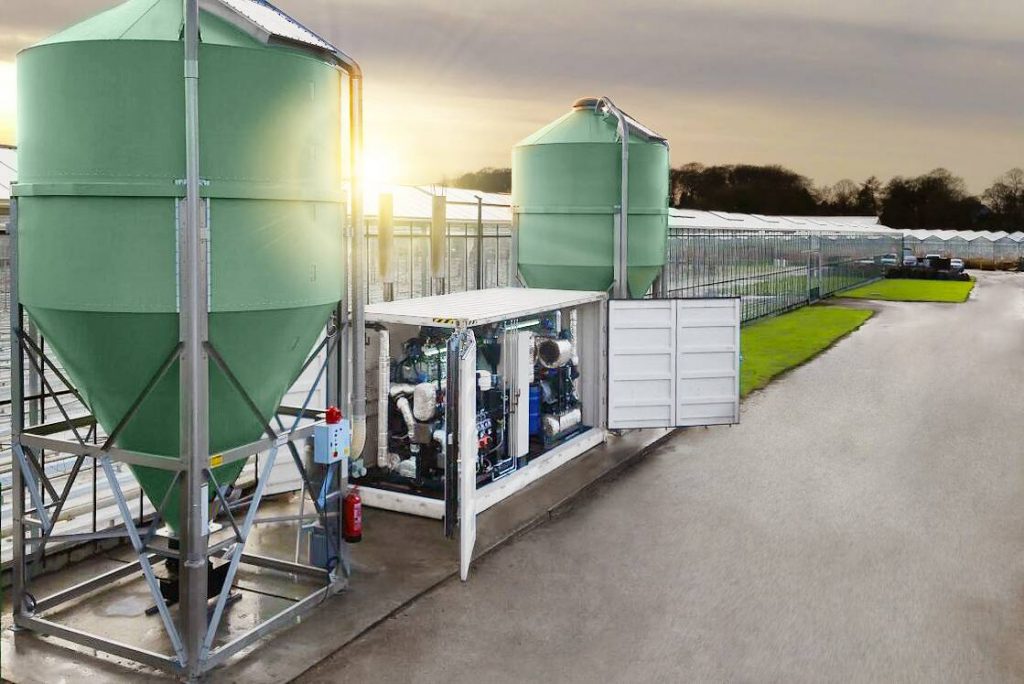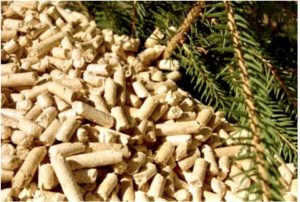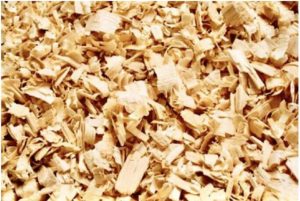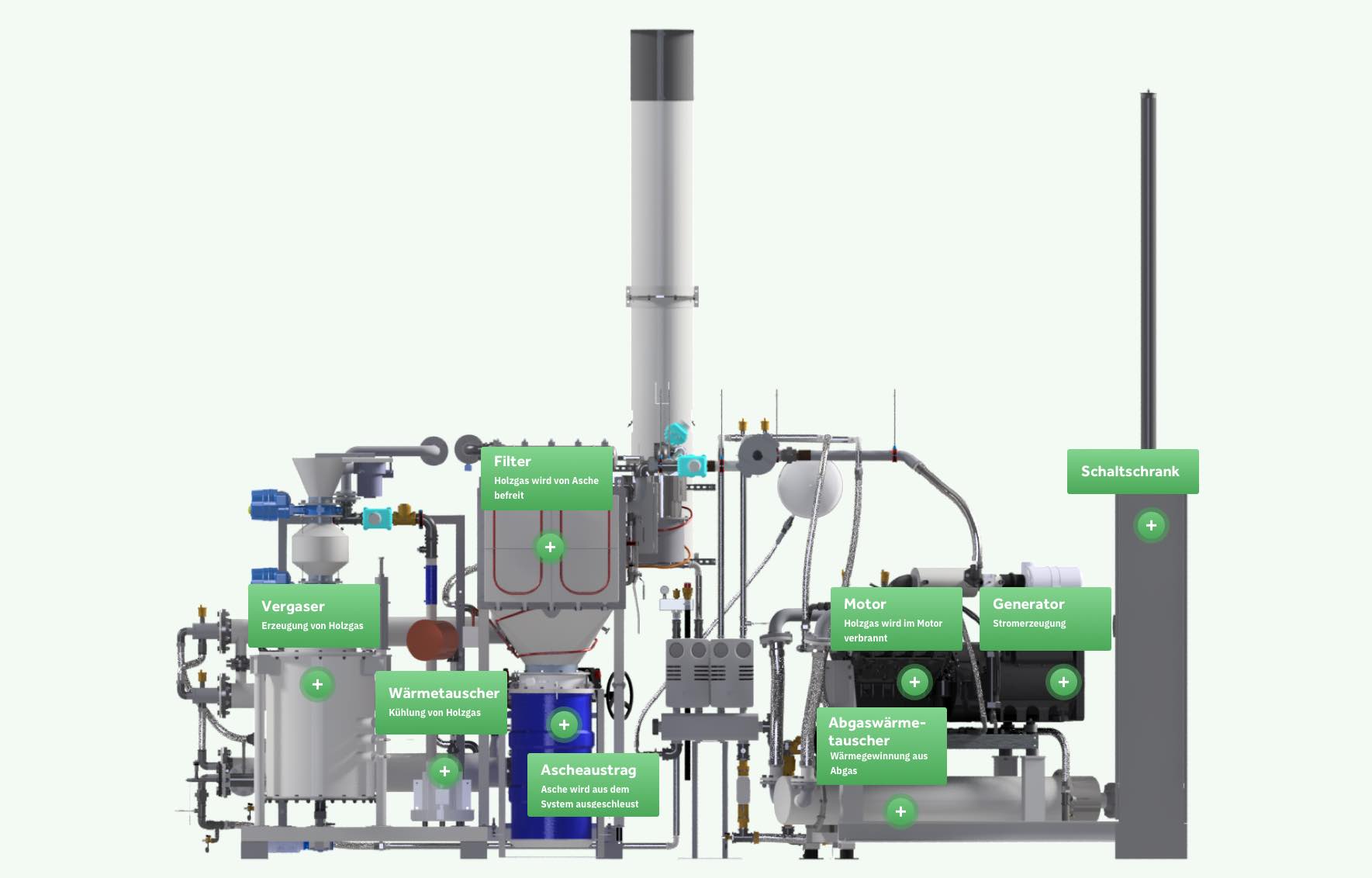Electricity from wood: How does a biomass cogeneration plant work?
Biomass cogeneration plants that use solid, renewable fuels such as wood pellets, wood chips or wood briquettes not only save costs, but also make an important contribution to climate protection - around the clock. How does such a biomass cogeneration plant work? You can find out here.
Companies all over the world are facing major challenges: To meet climate targets while reducing price risks, they must fundamentally transform their energy supply – away from fossil fuels and toward renewable energies.
A climate-friendly and at the same time highly economical solution is provided by combined heat and power plants (CHP) that are operated with wood-based biomass – e.g. with wood pellets, wood chips or wood briquettes (in short: wood-fired power generation).
By combining electricity and heat generation, such biomass CHP units achieve higher efficiency than many other energy technologies. Operators therefore not only save CO2, but also cash. In addition, biomass is the only renewable energy source that can provide energy all year round, regardless of the weather or time of day.

Table of Contents:
How does a biomass CHP unit work, using wood-fired power generation as an example?
This is what a biomass CHP for wood conversion can do
For whom is wood-fired power generation worthwhile?
Wood gas and biomass cogeneration plant: advantages at a glance
Which fuels are suitable for wood-fired power generation?
How much does a biomass CHP unit for wood-fired power generation cost?
Environmental friendliness is rewarded: subsidies for wood-fired power generation plants
How does a biomass CHP unit work, using the example of wood stomification?
Basically, a combined heat and power plant (CHP) is a power plant in which heat is generated and used in addition to electricity. CHP units mainly consist of an internal combustion engine that uses either liquid or gaseous fuels and drives a generator to produce electricity with the energy generated.
In contrast to a pure motor CHP unit, which is usually operated with fossil fuels such as natural gas, diesel or similar, a biomass CHP unit is a plant that can generate electricity and heat simultaneously from a solid fuel (the biomass). This first requires the conversion of the solid biomass into a so-called lean gas. This process happens in a gasifier. In the case of wood as biomass, lean gas is also called wood gas.
Woody residues are mostly used as wood biomass. For example, residual wood, waste wood, damaged wood, dead wood or production residues. These materials enter the wood gasifier processed either in the form of pellets, wood chips or wood briquettes. In the gasification process, the substances are carbonized under lack of air, so that a combustible gas is produced.
Following the wood gasification, gas cleaning and cooling takes place so that the wood gas is suitable for use in the gas engine of the biomass CHP unit.
Carburetor
Wood gas generation
Heat exchanger
Wood gas cooling
Filter
Wood gas is freed from ash
Ash discharge
Ash is discharged from the system
Engine
Wood gas is burned in the engine
Generator
Power generation
Heat exchanger
Heat recovery from exhaust gas
Control cabinet
Biomass cogeneration plant and its function: not letting waste heat go to waste
A great deal of heat – known as waste heat – is generated both during the gasification process, in the subsequent gas treatment process, and in the biomass CHP unit. On the one hand, this is hot exhaust air, hot water from the wood gas and engine cooling, and hot exhaust gases from the CHP unit. While other power plants often let this waste heat go to waste, our biomass CHP units convert it into usable heat thanks to heat exchangers.
If more heat is produced than necessary or if the heat consumption is not always constant, it can be temporarily stored in a buffer tank and used at another time.
Biomass cogeneration plants therefore have a decisive advantage over conventional power plants: they produce electricity and heat in a process called combined heat and power (CHP). If biomass, such as wood, is now used as a fuel instead of natural gas or crude oil, companies can produce electricity and heat in a climate-friendly, cost-saving way and, above all, around the clock.
If cold is also produced from the heat, one even speaks of CHP (combined heat, power and cooling) instead of CHP. Biomass cogeneration plants thus usually convert more than 85 percent of the renewable fuels used into usable energy – it hardly gets any more efficient than that.
This is what a biomass CHP for wood conversion can do
A biomass cogeneration plant for wood-fired power generation is not only highly efficient in terms of economy and ecology, but also offers a wide range of possible applications.

Here are some examples of possible applications:
- Wood chips drying
- Drying or heating purposes in the production process
- Generation of cooling energy via absorption chillers for cold storage, air conditioning, etc.
- Conversion of waste heat into electricity (e.g. ORC)
We have summarized the most important applications for you:
Power and heat generation
Power and heat production Biomass CHP units can therefore supply buildings (e.g. hotels, residential complexes, hospitals) with electricity as well as heat their heating systems and drinking water. This makes biomass CHP plants among the most efficient and - when using biomass such as residual wood or waste wood - among the most climate-friendly energy producers.
Process heat generation
Biomass CHP units are by no means only suitable for use in buildings. On the contrary, a biomass CHP unit is particularly interesting for manufacturing companies because it works especially efficiently in generating process heat, usually in the form of hot water - in other words, heat that is needed for industrial and commercial processes. Process heat is usually consumed constantly throughout the year; ideal conditions for biomass CHP units.
Cold generation
If a combined heat and power plant is equipped with an absorption chiller, the heat generated can be converted into cold and used for cooling. This process is called combined heat, power and cooling (CHP). It makes optimum use of the energy generated. CHP plants are particularly useful in industries that have a cooling requirement for air conditioning or process cooling. These include hotels, office buildings and hospitals, but also the food industry. Heat can even be used to produce drinking water from the air via intermediate cooling.
For whom is a wood-fired power generation worthwhile?
A biomass cogeneration plant with wood-fired power generation is particularly worthwhile for companies that require large amounts of thermal energy on a constant basis for their operations - even in summer. This is because a biomass cogeneration plant is only maximally economical if it operates at full load for a certain number of hours per year. Alternatively, excess heat energy can also be converted into cold in summer.
Wood gas and biomass cogeneration plant: advantages at a glance
Biomass cogeneration plants based on wood gas can score with a whole host of advantages. The biggest bonus is the combination of economic efficiency and climate protection. Biomass cogeneration plants usually convert more than 85 percent of the fuels used into usable energy. If you then also use the cost-effective and at the same time environmentally friendly wood pellets or wood chips as fuel, you save noticeable money.
Are you interested?
Would you like to find out whether a biomass cogeneration plant with wood-fired power generation is worthwhile for your company and what type of waste wood you can use to generate energy particularly efficiently? Then get in touch with us. We will be happy to advise you personally.
Which fuels are suitable for a wood-based biomass cogeneration plant?
The operation of a typical combined heat and power plant is possible with various fuels. Fossil fuels such as natural gas, heating oil or diesel are still the order of the day - but they do not contribute to environmental protection. This is where renewable raw materials come into play, which are ideally suited for biomass CHP units and thus make an enormous contribution to climate protection.
The following biomass fuels can in principle be used for wood-fired power generation in a CHP unit by means of an upstream gasification technology:

Wood pellets
Wood pellets are dry small sticks of wood made from sawdust and other wood waste that have been appropriately pressed into shape. This fuel is used in both larger wood gas cogeneration plants and mini cogeneration plants and is now a standardized, generally accepted and widely traded fuel.

Wood briquettes
Alternatively, wood residues from wood processing, such as planing or sawdust, can also be compressed into wood briquettes and used in a biomass CHP unit to generate electricity from wood.

Wood chips
Wood chips are produced by the so-called chipping of production residues up to whole trees in so-called chippers. Appropriate preparation, which usually consists of screening and drying, ensures the ideal fuel quality for the gasification process. Wood gas is then produced from the chopped wood by means of a wood gasifier. When waste wood (e.g. from bulky waste) is used, shredders are employed. In addition, metal residues are sorted out here.
How much does a biomass CHP unit for wood-fired power generation cost?
A wood-fired power generation plant is an individual solution, where the investment costs and also the running costs can be very different. In addition, the different fuels and, if applicable, their processing also result in different costs. Depending on the application in the process or in the building, however, different subsidy amounts also come into play, so that a generalization of the total costs is hardly possible.
You want to learn more?
Please feel free to ask us for a first rough cost estimate, which you can use for further planning.
Environmental friendliness is rewarded: subsidies for wood-fired power generation plants

Companies that use a biomass cogeneration plant to generate electricity from wood and thus contribute to climate protection receive financial support at many levels in Germany. In addition to the feed-in tariff for surplus electrical energy, the German Federal Ministry of Economics and Export Control (BAFA) promotes corresponding projects, often in the areas of process heat or energy efficiency.
The Kreditanstalt für Wiederaufbau (KfW) also supports climate-friendly rethinking with promotional loans and repayment subsidies of up to 55 percent of the eligible costs. And the individual federal states and regions also reward the use of biomass CHP units as progressive and environmentally friendly energy generation.
